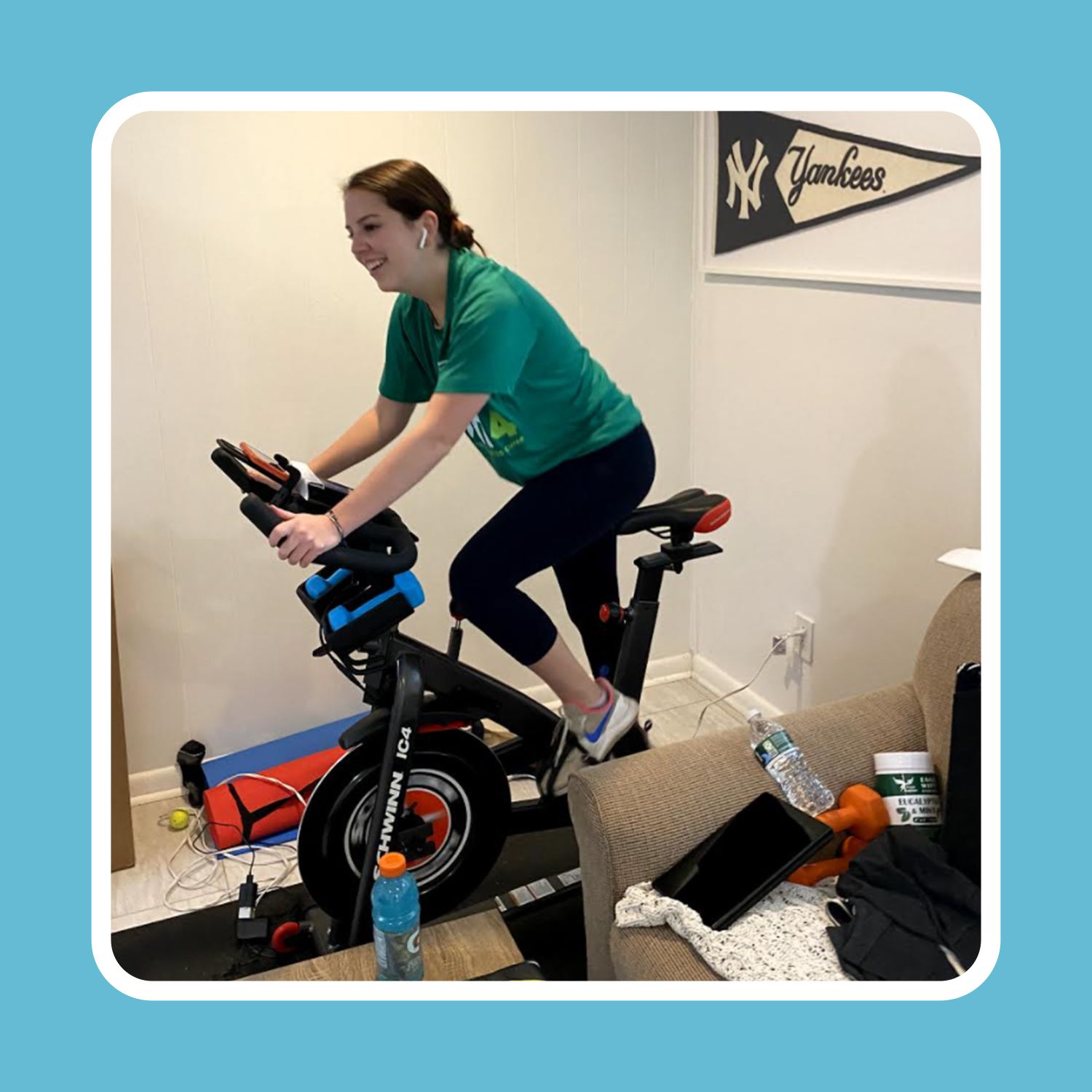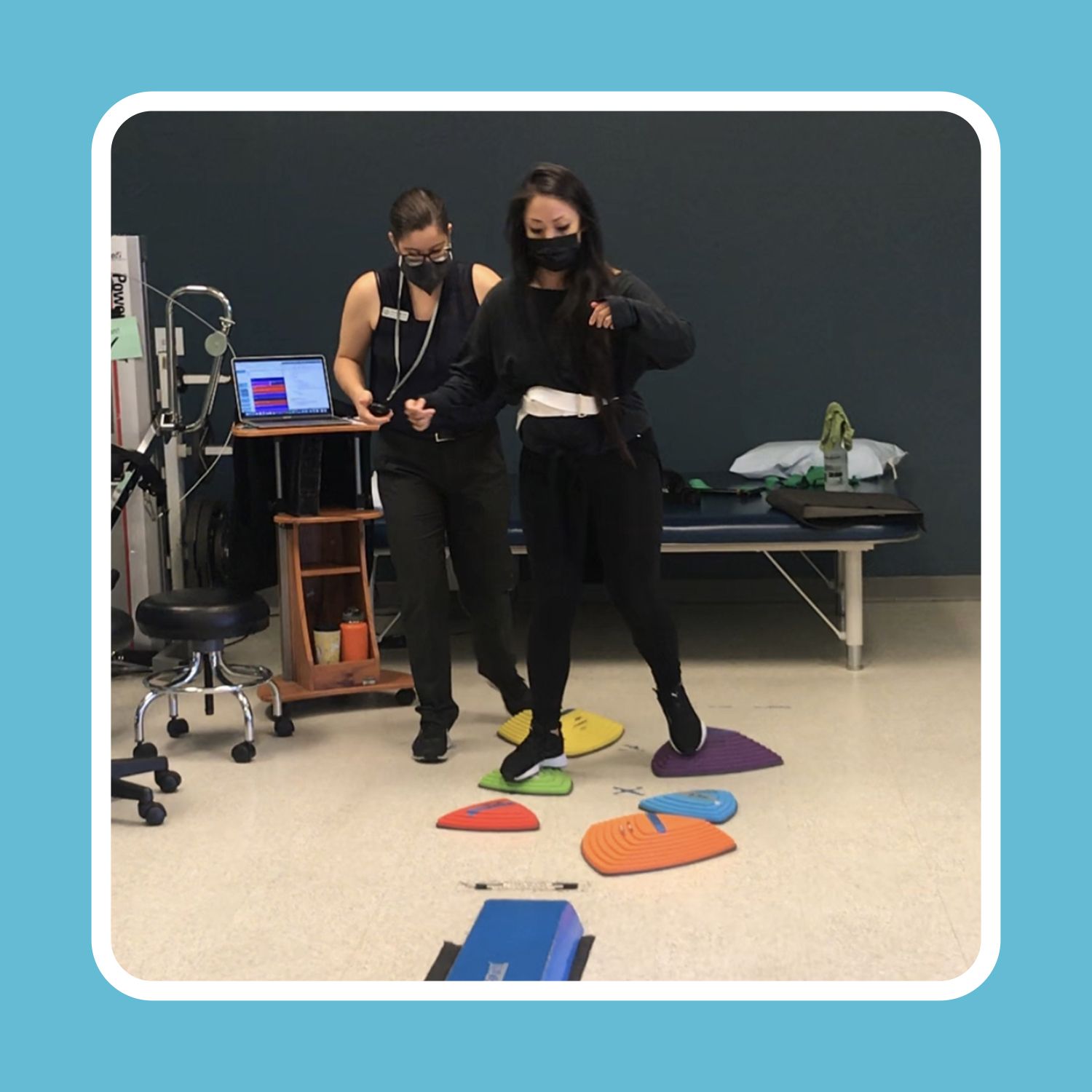When you live with a chronic disease, it means dealing with an ever-present stream of stressors that other people don’t even think about, like regular doctor’s appointments, hard-to-handle symptoms, and keeping track of daily meds. Throw the pressures of everyday life on top of that, and it can quickly become super overwhelming.
While every disease is different, doctors often advise patients with chronic conditions to stay physically active, since movement can help control symptoms and ease the stress that stems from being sick.
But a regular exercise habit can be difficult for anyone — especially if you already have an underlying condition to worry about. So we talked to three women living with different chronic illnesses on how they keep moving, despite the challenges that often get in the way.
Know your limits—and learn to be OK with them.
For years, Claire Bonti struggled with severe diarrhea and significant weight loss, until she learned that she has Crohn’s disease, a chronic inflammatory bowel disease that affects the lining of the digestive tract. The 30-year-old said committing to a regular fitness regime seemed daunting, until she realized that she could build movement into her routine organically. “There are different ways to be active, like walking your dog,” she says. Whether it’s walking in place while you’re streaming your favorite show, parking further than you normally would while running errands, or choosing the stairs in your building, the little actions all add up.

Adjust the intensity of your workouts
Diane Palaganas says she often feels “lethargic and tired” because she has multiple sclerosis (MS), a disease of the central nervous system that interrupts information flow within the brain, as well as between the brain and body. “I used to be a professional dancer, so I know how important cardio, strength, and flexibility is for your body,” she says, adding that her symptoms tend to include fatigue and muscle spasms in her legs.
She’s learned to ratchet up or down the intensity of her workouts, depending on how she’s feeling on a particular day. While she’ll usually focus on cardio and circuit training when she’s well, the 37-year-old turns to light stretching and yoga when she feels tired. “I’m still learning to listen and not push too hard,” she says. “It’s important to work out smarter, not work out harder.”
Take things day by day.
Palaganas says she’s had to learn to approach fitness on a daily basis. “There is a fine line because some days my will can handle more than my body can,” she says.“Some days are better than others—and that is perfectly okay.” But she says the most important aspect is to not get down on yourself in those tough moments. “Be kind to yourself and your body,” she says. “Meet yourself where you are at this moment and don’t forget to celebrate”—even if the wins are small, like taking the stairs instead of the elevator.

Think of fitness as part of your treatment.
Ashley Krivohlavek lives with psoriatic arthritis (PsA), a chronic inflammatory disease of the joints. Patients with PsA often struggle with fatigue, stiffness, and swelling of the fingers and toes, according to the National Psoriasis Foundation.
“My rheumatologist always says, ‘Motion is lotion,’” the 37-year-old, who loves to do HIIT workouts, Pilates, and yoga, says. When she’s on the move, she “can feel my joints gaining more mobility, adding that her daily workout session “is the only time when I feel like my prior self—healthy, strong, and in control of my body.” Her fitness regime has also helped her gain more mobility and range of motion in her joints. An added bonus: “It helps tremendously with my sleep.” Always check with your doctors to make sure that you’re focusing on the kind of movements that work best for your condition.
Aim for consistency—even if it’s just 5 minutes a day.
Palaganas says she personally strives to move at least 30 minutes a day, including doing her physical therapy exercises. She also tries to add in yoga at least twice a week. “When I am inactive, my muscles get stiff, I lose flexibility [and] my balance and coordination get thrown off,” she says. “When I am consistent with my exercises, movement starts to come with ease. It’s true what they say, ‘If you don’t use it, you lose it’—I don’t want to lose it.” Depending on your illness, routines can come in all forms: Even five minutes a day can be an effective habit.

Make fitness about more than just yourself.
Fitness has helped Krivohlavek manage the stress that comes with her disease—and she loves having a community to share both the struggles and achievements. She’s a member of CreakyJoints, an online arthritis education and support organization, and says the overall support has been invaluable.
While fitness has also helped Bonti manage the pressures associated with Crohn’s disease, she’s found a useful way to pay it forward through the Crohn’s & Colitis Foundation. She volunteers for the group’s indoor cycling events called Spin4 Crohn’s & Colitis Cures, which raise money for the foundation. “That’s perfect for me,” she says. “It’s lower impact—and I can also celebrate what other people are doing.”
Source: Read Full Article
